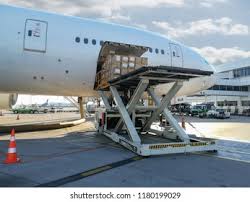Imagine boarding an aircraft and enjoying a perfectly cooked, fresh meal at 30,000 feet. While passengers may take this luxury for granted, there’s an advanced piece of equipment behind this seamless experience: the High Loader.
High loaders are specialized vehicles designed to streamline the process of loading and unloading food, beverages, and catering supplies directly into aircraft cabins. With rising expectations around in-flight meals and efficiency, high loaders are proving to be a game-changer in the aviation industry.
In this article, we’ll explore what a high loader is, its key benefits, and how it’s transforming flight catering into a more efficient, safe, and high-quality process for airlines and passengers alike.

✈️ What Is a High Loader?
A High Loader, also referred to as a catering high lift or flight catering truck, is a critical part of ground support equipment at airports. It is specially designed with an extendable platform that aligns with the aircraft’s service door—usually located near the front or center of the aircraft.
This unique lift mechanism allows catering staff to safely and efficiently transfer meal trays, trolleys, and beverages directly into the aircraft, minimizing manual labor and maintaining high hygiene standards. Given the height of most aircraft doors, which can be several meters off the ground, it is essential to ensure accurate and damage-free catering delivery.
⚙️ Key Features of a High Loader
- Hydraulic lifting platform that adjusts to different aircraft sizes
- Temperature-controlled compartments for food preservation
- Spacious loading bay for transporting multiple trays or trolleys
- Automated sensors for enhanced operational safety
- Anti-slip flooring and safety railings for crew protection
These features make the loader not just a convenience but a necessity for modern airline operations.
🚀 Benefits of Using a High Loader in Flight Catering
Enhanced Operational Efficiency
It significantly reduces the amount of time required to load and unload catering supplies. Traditional manual processes are slow and labor-intensive. In contrast, high loaders allow airport ground staff to perform the same tasks quickly, safely, and with precision.
By speeding up turnaround time between flights, airlines can operate on tighter schedules and even increase the number of flights they run per day—leading to better profitability and time management.
Improved Crew Safety
Ground crew and flight attendants run the danger of getting hurt when they manually move large trolleys and meal containers. High loaders eliminate the need for heavy lifting by automating the elevation and delivery process.
This reduces occupational hazards and supports a safer working environment at airports. Safety rails, automatic locking mechanisms, and anti-slip surfaces further reduce the risk of accidents during loading operations.
Maintaining Food Quality and Hygiene
One of the most important roles of a high loader is ensuring the integrity and hygiene of food and beverage items. With its enclosed and temperature-controlled compartments, a high loader protects meals from contamination, weather exposure, and physical damage.
This guarantees that passengers receive meals that are not only fresh but also comply with strict food safety regulations. With minimal human contact, the risk of cross-contamination is reduced, preserving both quality and safety.
Cost Savings and Sustainability
Automating catering operations through high loaders allows airlines to reduce the labor force needed for manual loading. Significant staffing and training cost savings result from this.
Furthermore, high loaders reduce meal wastage by handling trolleys and trays gently, minimizing spillage and breakages. Airlines can cut down on replacement costs while contributing to sustainability goals through less waste generation and better resource utilization.
Versatility Across Aircraft Types
One of the greatest advantages of a loader is its adaptability. Whether it’s a small regional jet or a large international wide-body aircraft, high loaders can be adjusted to align with various aircraft heights and designs.
They are also built to carry a wide range of catering items including hot and cold meals, beverages, special dietary meals, and bulk items. Some advanced models even support flameproof designs, making them ideal for sensitive environments such as military or defense airfields.
📈 Future of High Loaders in Aviation Catering
The role of the loader is only set to grow as airlines continue to modernize and expand their services. With rising expectations for inflight dining quality and faster turnaround times, the demand for automated, hygienic, and efficient catering solutions is higher than ever.
As technology advances, future loaders may include AI-driven inventory systems, automated quality checks, and smarter energy usage, making them even more efficient and eco-friendly.
✈️ Conclusion: The High Loader is the Future of Flight Catering
Providing a smooth and excellent in-flight experience is crucial in the fiercely competitive airline sector. The high loader is a crucial part of that equation. It not only improves the efficiency of catering operations but also ensures food safety, reduces operational costs, and boosts overall customer satisfaction.
For airlines looking to stay ahead of the curve, investing in modern, reliable high loaders like those from Kora is a smart, future-ready move.
Ready to elevate your inflight catering operations? Contact Kora today and discover how our high loader solutions can enhance your service quality and operational efficiency
Follow us for more updates.
